Greenstalk Planter Ideas for a Fall Garden
Growing fall crops in a Greenstalk Vertical Planter is one of the most fun and rewarding garden projects you can do. But which crops are best to plant and grow in a Greenstalk during the autumn months?
My first time using the Greenstalk planter was during the fall, and it didn’t take long (two weeks actually) to be convinced how enjoyable of a garden endeavor it was.
*Disclosure: links below contain affiliate links, which means if you click through and make a purchase, this site will earn a commission at no extra cost to you.
There are four keys to getting started growing in a Greenstalk Vertical Planter in the fall:
- choosing which fall crops to plant
- understanding which crops work best in the Original vs. Leaf planter
- knowing how many seeds (or plants) to plant per pocket
- planting at the right time to get a harvest before winter
We’ll explore each of these keys below, and by the end of this post, you’ll be able to confidently grow a fall garden in your Greenstalk Vertical Planter!

(Psst… if you don’t have a Greenstalk Planter yet, my promo code JILL10 will get you $10 off your $75 or more purchase!!)
HOW THE GREENSTALK PLANTER WORKS
If you’re new to growing in a Greenstalk Vertical Planter, here’s what you need to know.
Plants grow in individual pockets in the Greenstalk planter. Though it doesn’t look like much soil, appearances are deceiving. Each tier of the Original Greenstalk planter holds 1 cubic foot of potting soil (8 gallons!), and each tier in the Leaf planter holds 0.8 cubic feet.
That’s actually a lot more soil than it appears — which means plants’ roots have plenty of room to spread out and grow.
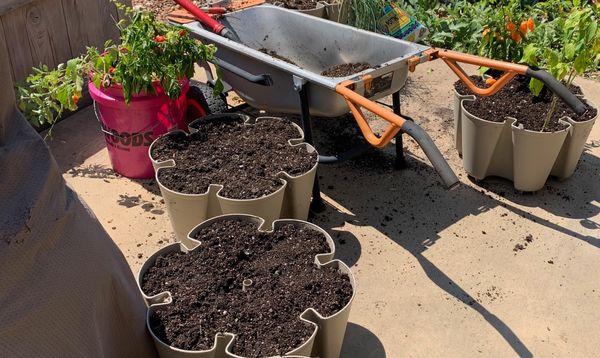
But the beauty of the Greenstalk planter is actually in its patented watering system. You fill up the basin at the top, and a tunnel system routes the water to each tier evenly through shallow discs inserted in each tier.
Once the planter is fully saturated, excess water weeps out the bottom, so you know when you’ve watered enough.
One of my favorite things about growing in the Greenstalk in the fall is that I actually — with the exception of the beginning of the season when the weather is still hot — only have to water every few days!
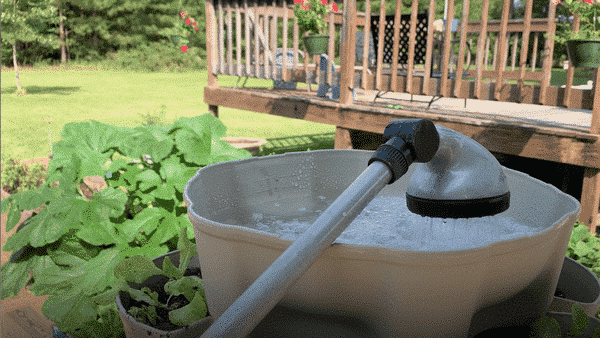
WHAT IS THE DIFFERENCE BETWEEN THE GREENSTALK LEAF VS ORIGINAL PLANTER?
If you don’t have your Greenstalk planter yet, you’ll want to decide whether to buy the Original Planter or the Leaf Planter.
The main difference between the Original and Leaf planters is the depth of each tier. The Original planter is 10″ deep, whereas the Leaf planter is 7″ deep.
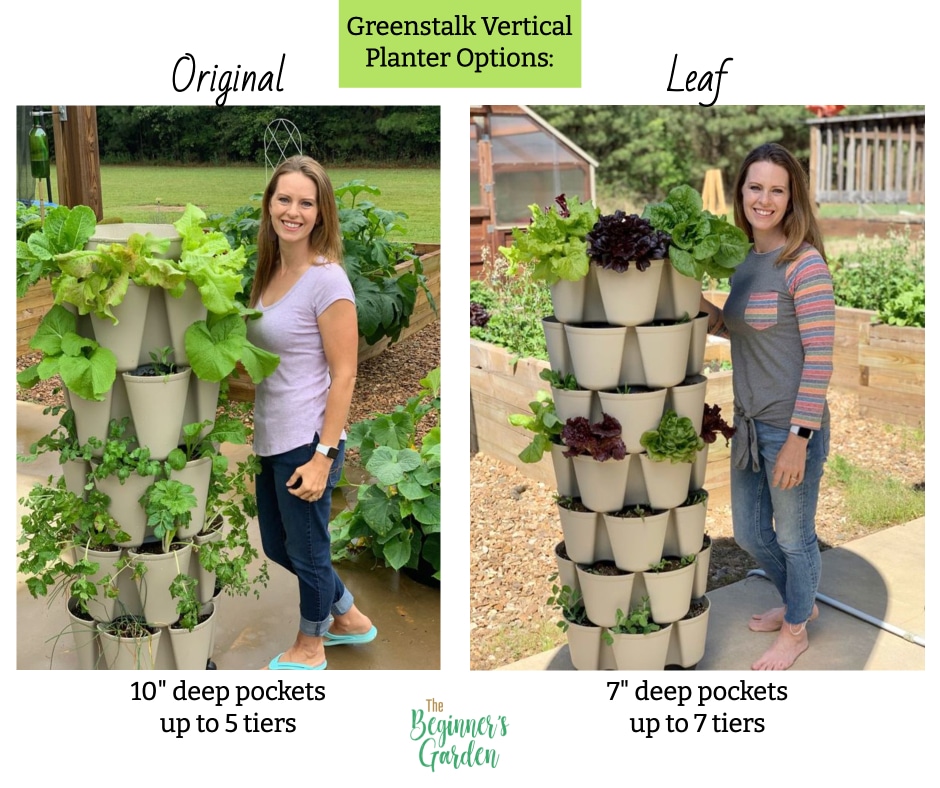
While many plants can grow in either the Original or the Leaf, some are better suited for one or the other. (We’ll discuss those more below.)
Besides the depth, you can also get more tiers with the Leaf Planter since the tiers are shorter. For example, my Original Planter is 5 tiers tall, and my Leaf Planter is 7 tiers tall.
Bottom line: You can grow more quantity of plants in the Leaf Planter but more diversity of plants in the Original Planter.
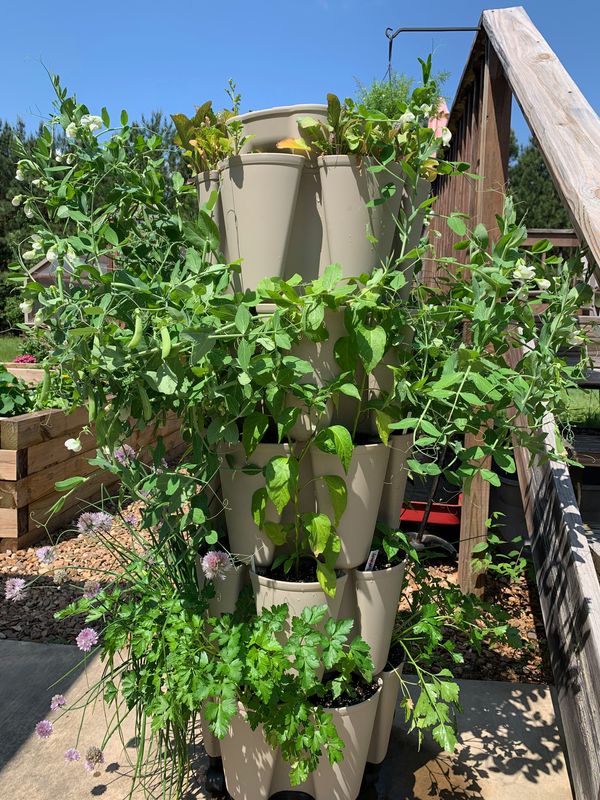
WHAT TO GROW IN THE GREENSTALK PLANTER IN THE FALL
Most of the cool-season crops that you can grow in the Greenstalk in the early spring you can also grow in the fall. Let’s look at a few ideas:
1. Lettuce
Lettuce is my absolute favorite crop to grow in the Greenstalk planter — in both the spring AND the fall. As a shallow-rooted plant, they thrive in the smaller Leaf planter. You can direct sow seeds or plant transplants.
- How many plants per pocket: 3 or more
- Original or Leaf: Either
- Recommendations: leaf lettuces are ideal: Cosmos, Red Romaine, Buttercrunch
- When to Plant: 6-8 weeks before average first frost.
- Bonus tip: Plant lettuce every week or every other week to get a staggered harvest
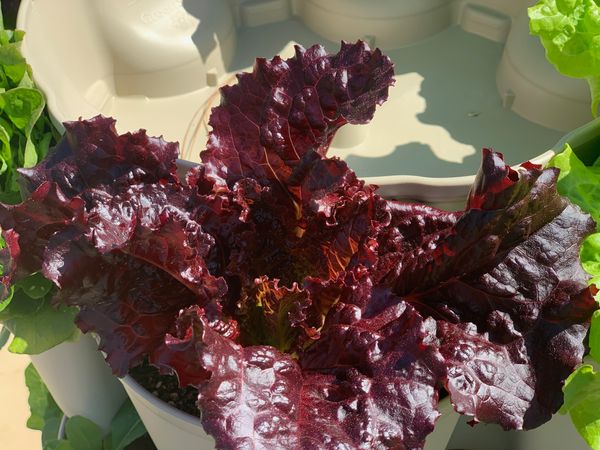
2. Arugula
Arugula is the perfect leafy green to grow in a Greenstalk in the fall and maybe even the winter. Its seeds will germinate readily in hotter soil than lettuce will, and it’s actually more cold-hardy than lettuce. In some climates (like my zone 7b), it will survive the winter!
- How many plants per pocket: 3 or more (I just sprinkle a handful of seeds per pocket)
- Original or Leaf: Either
- When to Plant: Anytime, up to about 4 weeks before average first frost
- Bonus tip: After you harvest a pocket of arugula, immediately sow another set of seeds for a continual harvest. The video below is an example of this in the high summer, but it will apply to fall gardening as well:
3. Spinach
Like arugula, spinach is a hardy option for your fall and winter garden in your Greenstalk. The key is not to sow seeds too early because they won’t germinate in hot soil, and they will bolt if the weather is too warm.
- How many plants per pocket: 3 or more
- Original or Leaf: Either
- When to Plant: 4-6 weeks before average first frost
- Bonus tip: If you live in a mild winter area and have to plant later to avoid the heat, you may not get a harvest until late winter or early spring.
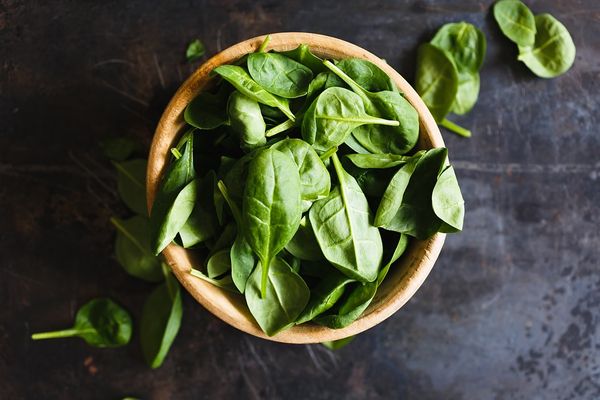
4. Celery
Though celery isn’t the easiest crop to grow (I don’t recommend it to brand new gardeners), it’s a great choice for the Greenstalk garden when you feel up to it. Because celery is a water-hog, it loves the consistent moisture the Greenstalk provides. It grows best in cool but not cold weather; try to harvest before temperatures go below 30F.
- How many plants per pocket: 1-2
- Original or Leaf: Original only
- Recommendations: Chinese White celery is a bit easier to grow than others
- When to Plant: start seeds indoors 12 weeks before average first frost; transplant 4 weeks later
- Bonus tip: Young celery seedlings are vulnerable to heat so transplant on a mild day and water well.
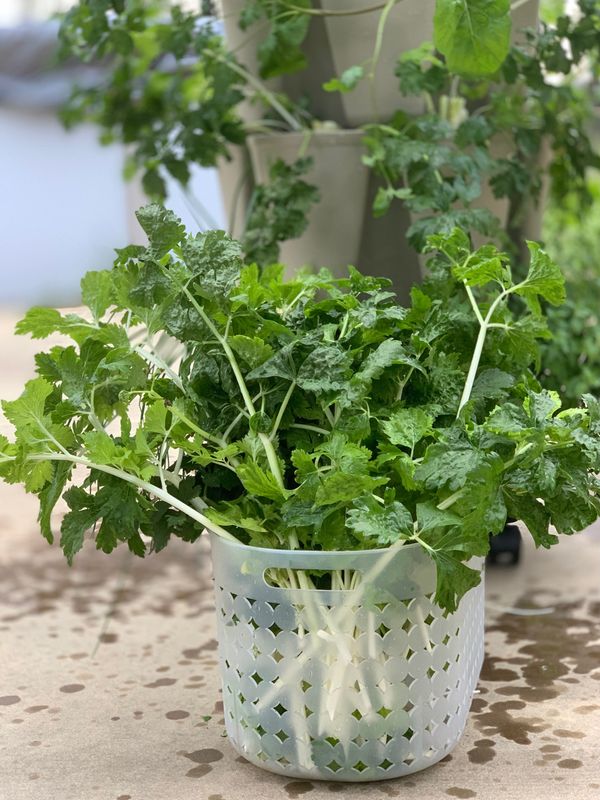
5. Snap Peas
Whether you like to snack on snap peas as you pick them or you bring them in the kitchen to sautee with a bit of garlic (yum), these plants grow really well in the Greenstalk.
- How many plants per pocket: 3
- Original or Leaf: Either
- Recommendations: Sugar Ann Dwarf is a bit more tame as it grows than other climbing varieties, which is a better choice for Greenstalk
- When to Plant: direct sow seeds 8 weeks before your average first frost date
- Bonus tip: Even dwarf varieties will trail a bit, and I’ve found the Greenstalk plant supports helpful. I also recommend planting snap peas toward the bottom of the Greenstalk so they don’t shade out other plants as they grow larger.
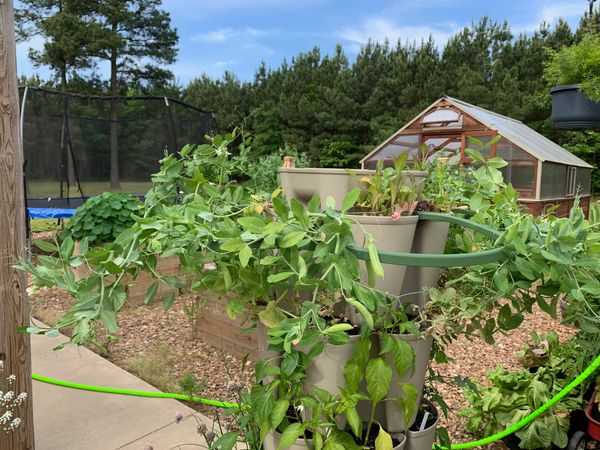
6. Beets
Grow beets for either the greens or the roots — you can do both! They grow surprisingly well in the rich, loose soil of the Greenstalk.
- How many plants per pocket: 3
- Original or Leaf: Either
- Recommendations: For fall, choose an early maturing variety like Early Wonder if you’re wanting roots. Any kind is perfect for greens.
- When to Plant: direct sow seeds or transplant 8 weeks before your average first frost date
- Bonus tip: If you direct sow and you want beet roots, be sure to thin the seedlings to a maximum of 3 per pocket. If more than that grow, you’ll get much smaller roots.
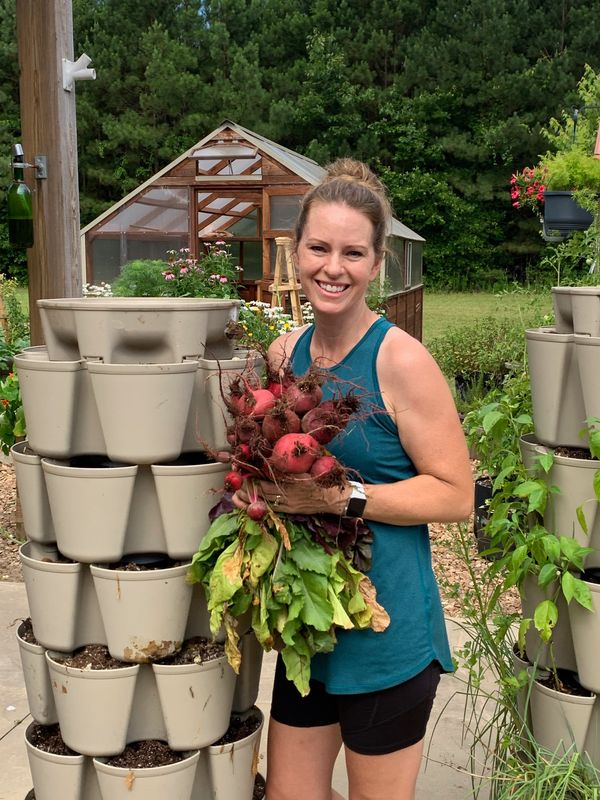
7. Carrots
You may be surprised to hear that carrots grow well in a Greenstalk! Just like growing carrots in your garden, the key is to thin the seedlings to ensure the growing roots don’t crowd one another.
- How many plants per pocket: 3-5
- Original or Leaf: Original for most varieties, though if you plant small carrots or plan to harvest baby carrots, the Leaf will work
- When to Plant: direct sow seeds 8 weeks before your average first frost date
- Bonus tip: Once carrot tops start growing true leaves, take out extra sprouts so remaining carrots are 1″ apart from one another.
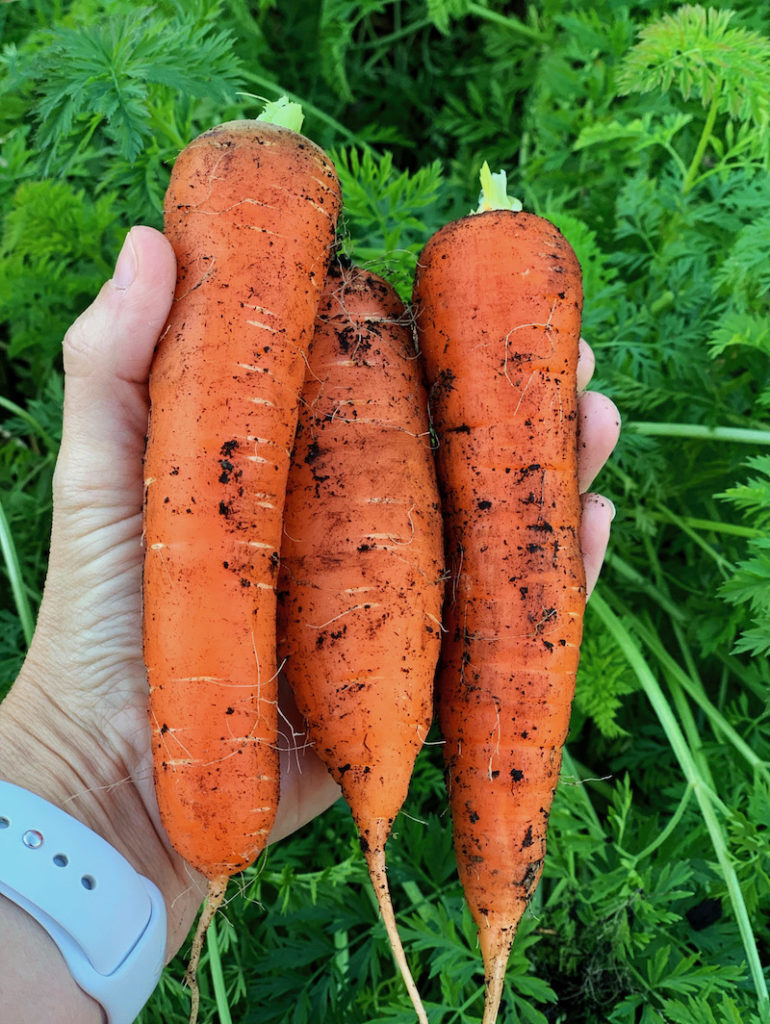
8. Parsley
If you haven’t considered it, herbs are great options to grow in your Greenstalk! For the fall garden, you want to choose herbs that can tolerate a frost and enjoy some cool weather — like parsley.
- How many plants per pocket: 1
- Original or Leaf: Original
- Recommendations: Parsley seeds take a long time to germinate; for best and fastest results, purchase transplants or start seeds indoors 6 weeks before transplant.
- When to Plant: transplant 8 weeks before your average first frost date
- Bonus tip: You can start cutting transplanted parsley after the plant gets established — as early as a week later! Keep it watered and it’ll continue growing new leaves for you, and in mild climates it may survive the winter and give you more harvest through next year!
9. Cilantro
Cilantro loves the cold weather and is a perfect herb to choose for fall gardening. Having fresh cilantro all winter (depending on your climate) to snip from the Greenstalk is such a joy!
- How many plants per pocket: 1-3
- Original or Leaf: Either
- Recommendations: Direct sow or transplant cilantro — both will work
- When to Plant: transplant as early as 4-6 weeks before your average first frost date or direct sow as early as 6-8 weeks before your average first frost date, though either can be planted later as well.
- Bonus tip: Don’t plant until the temperatures dip into the 80s or cilantro could bolt.

10. Mustard Greens
These hardy greens can be grown for salads when harvested young or for cooked greens when left to grow larger, and they are a great choice for the fall and winter garden in your Greenstalk planter.
- How many plants per pocket: 3+ if harvesting young for salads; 1 if harvesting the mature plant
- Original or Leaf: Either
- When to Plant: direct sow as early as 8 weeks before your average first frost date, all the way through winter depending on your climate.
- Bonus tip: Mustard greens grow fast! Cut frequently if you’re wanting to harvest for salads before they get tough and more bitter.
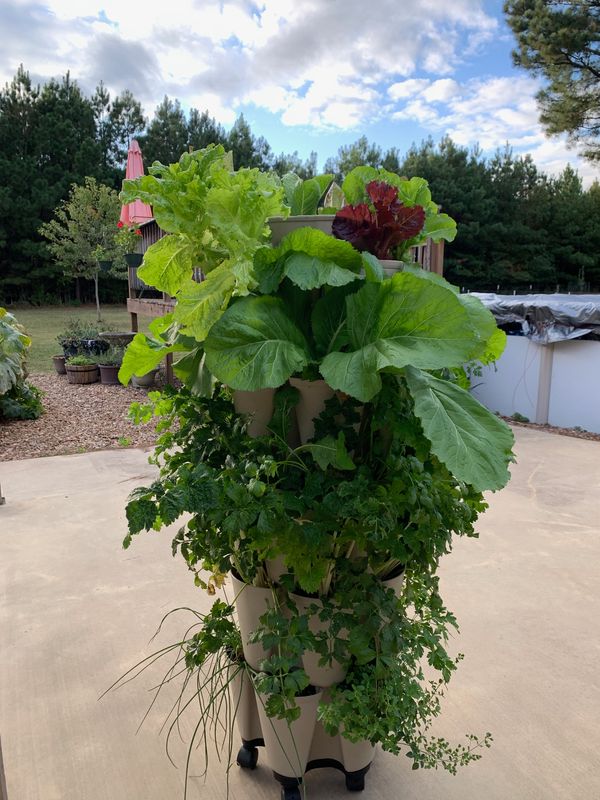
11. Collard Greens
Collard greens are a southerner’s delight and can be harvested all winter in many climates.
- How many plants per pocket: 1
- Original or Leaf: Either
- When to Plant: direct sow as early as 8 weeks before your average first frost date, all the way through winter depending on your climate.
- Bonus tip: Watch out for cabbage worms early in the fall! You might consider Greenstalk’s Insect Netting to protect young plants. By winter, though, they’re usually not a problem.
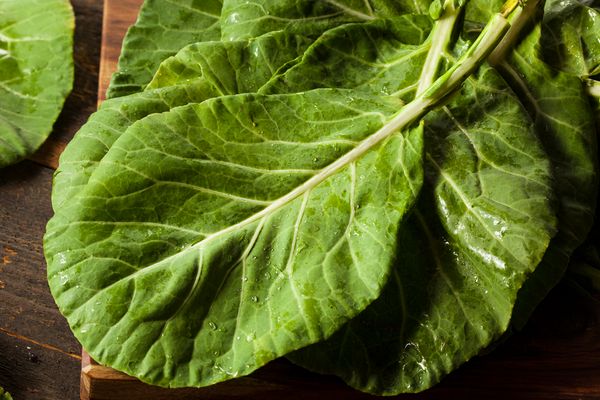
12. Perennial herbs (Chives, Oregano, etc.)
Perennial herbs — those that survive the winter in your zone — can be grown in the Greenstalk. In fact, I chose to plant chives and oregano in my Greenstalk in the fall my first season with the planter.
What I found, after a year of growing, is that I actually prefer not growing perennial herbs in the Greenstalk indefinitely. Instead, they are a good option for a year or two. Why? The perennial nature of the herbs makes it where their roots will continue to grow. Eventually the plant will run out of nutrients and even the Greenstalk’s watering system won’t be able to provide enough for its needs.
For example, after only one year, you can see how only two chive plants’ root systems took over this one tier of the Greenstalk.

Based on my experience, then, I don’t discourage planting perennial herbs in a Greenstalk; I only recommend you plan to grow them for a year or two before dividing them or transplanting them.
- How many plants per pocket: 1
- Original or Leaf: Original
- When to Plant: transplant when the highest of summer heat passes
FALL GARDENING IN THE GREENSTALK PLANTER
As you can see, your options for what to plant in your Greenstalk planter are numerous!
If you haven’t yet ordered a Greenstalk planter, you can get $10 off any $75 or more purchase with my promo/affiliate code JILL10 or by clicking the link below:
Greenstalk Planter Coupon
Once you choose whether to buy the Original planter or the Leaf planter (or both! I love both of mine!), assembly is very easy!
The video below walks you through how I assembled my Greenstalk planter. Detailed instructions are included in each order, but sometimes it helps to see it.
Once you grow one season in your Greenstalk — especially in the fall — I have no doubt you’ll be as hooked on growing in the Greenstalk as I am!
And if you already own a Greenstalk, I’d love to hear your favorite plants to grow in it! Comment below!
Related Blog Post: How to Grow in a Greenstalk Vertical Planter (interview with the inventor’s daughter!)
Do you get overwhelmed with garden planning?

Subscribe here for my best tips to plan your garden in just 7 days -- all for FREE.
Plus, I'll send you my "In the Garden E-mail" on Fridays, periodic updates on garden resources relevant to you, and you'll receive access to my entire bank of free garden downloads!
You are also agreeing to our privacy policy.

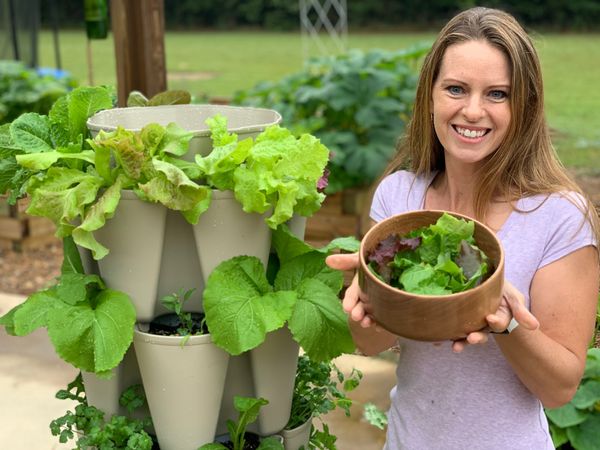
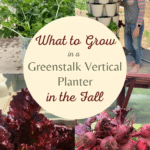
I grew in a Greenstalk this summer and it did not go well. Plants were not healthy, I was pretty disappointed.
This past summer was my first one, and I noticed they weren’t as “easy” to grow as fall and spring crops. I’ll be adjusting my fertilizing and watering for next year. I think that was the biggest difference because the spring and fall crops don’t require as much as the heavy-producing summer crops do.
Do you recommend fall plantings in a Greenstalk, regardless of hardiness zone? I’m in zone 7B and we do get occasional temperatures in the single digits during hard winters.
Absolutely! I’m in 7b as well, and fall is where my plants did the best (and early spring). The key is to get them growing early so if you need to harvest before hard freezes you can. This week I planted carrots, beets, arugula, lettuce, and snap peas. Spinach, arugula, and mustard greens survived all winter last year for us. (For those in much colder climates, fall crops just need to be planted earlier, just like planting in the ground or in raised beds).
Soooooo…two reactions.
First, those carrots look great. I’ve found garden grown carrots taste much better than the store bought variety.
Second, the vertical planters may not last more than a couple of seasons. I live in Oregon, and the weather is pretty mild out here. However I’ve switched to metal planters because the the plastic ones fell apart.
I’ve used mine one full season and they are as sturdy as they were when I got them. Time will tell for me, but I’ve known other gardeners who have had theirs for years. The difference with the Greenstalk is that they are made in the USA from a family-owned company who takes pride in a high quality product. I’m sure every plastic has its limitations, but I can tell a difference in the quality.
Oh for sure, I’m sure my planters were the cheap foreign imported kind.
How many garlic cloves do you recommend to plant in each planter? Can they be planted in the leaf planter or do they have to be in the original? It’s my first time planting garlic and first time using the greenstalk vertical planter. Thank you for all the tips!
I haven’t planted garlic in my Greenstalks, but knowing what garlic needs and how it grows, I’d suggest only one plant per pocket — MAYBE two, but I think the bulbs would be smaller with two. I do think the leaf planter would be fine since most of the roots will be in the top 6” of soil. Just make sure the soil doesn’t dry out in the winter and you might consider supplemental nitrogen fertilization when they start to grow in the later winter. The soil fertility is lower in a container, generally, and leaches out faster. Garlic is a heavy feeder and won’t tolerate soil lacking in nutrients.
I only received my Investor’s bundle planter this week. I have seeds. Should I be planting now? 8b, Georgetown, TX, Sun City 78633.
Bill
Depends on the crop, but in 8b I think it would be a great time to plant most things.
Thanks. It’s just now breaking 100+ this week.